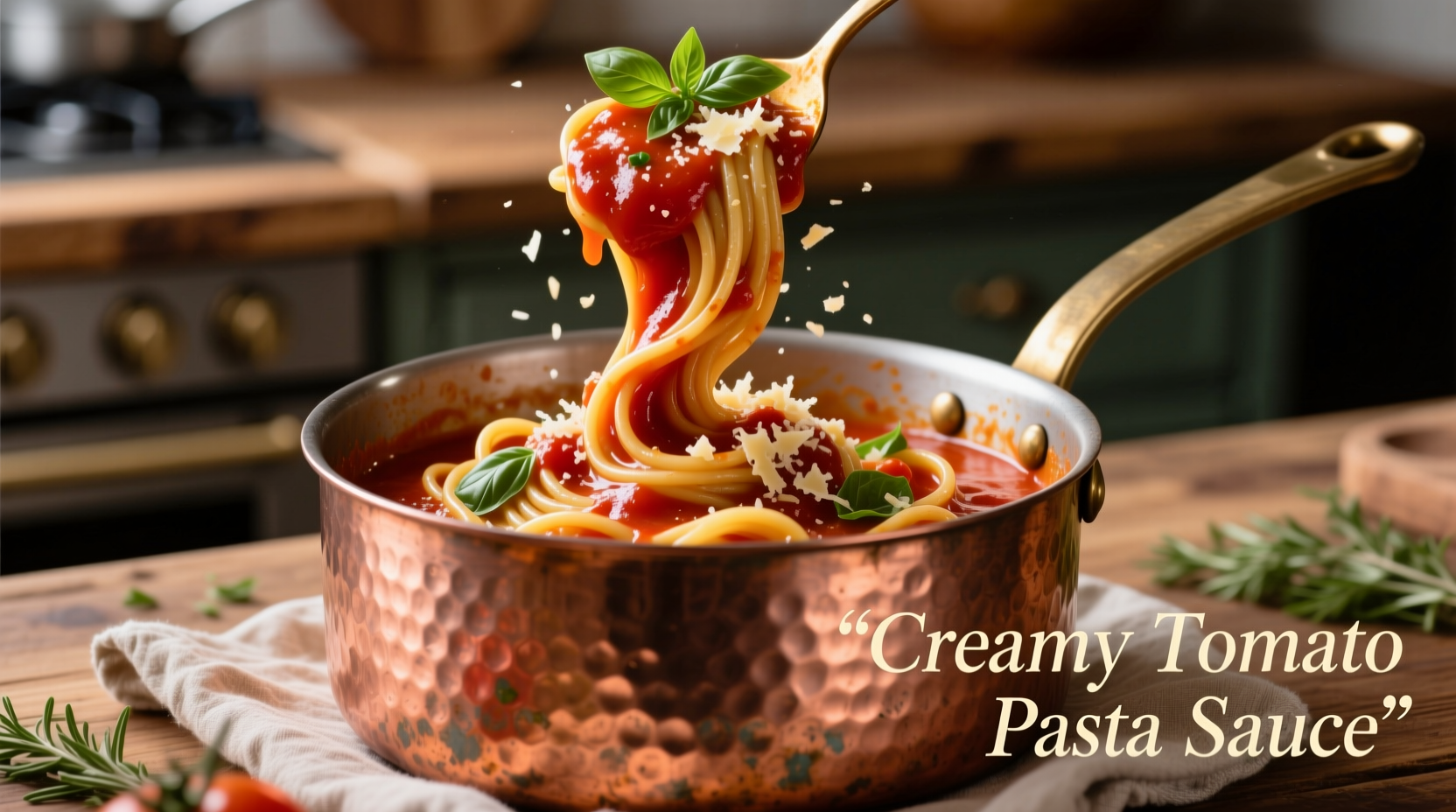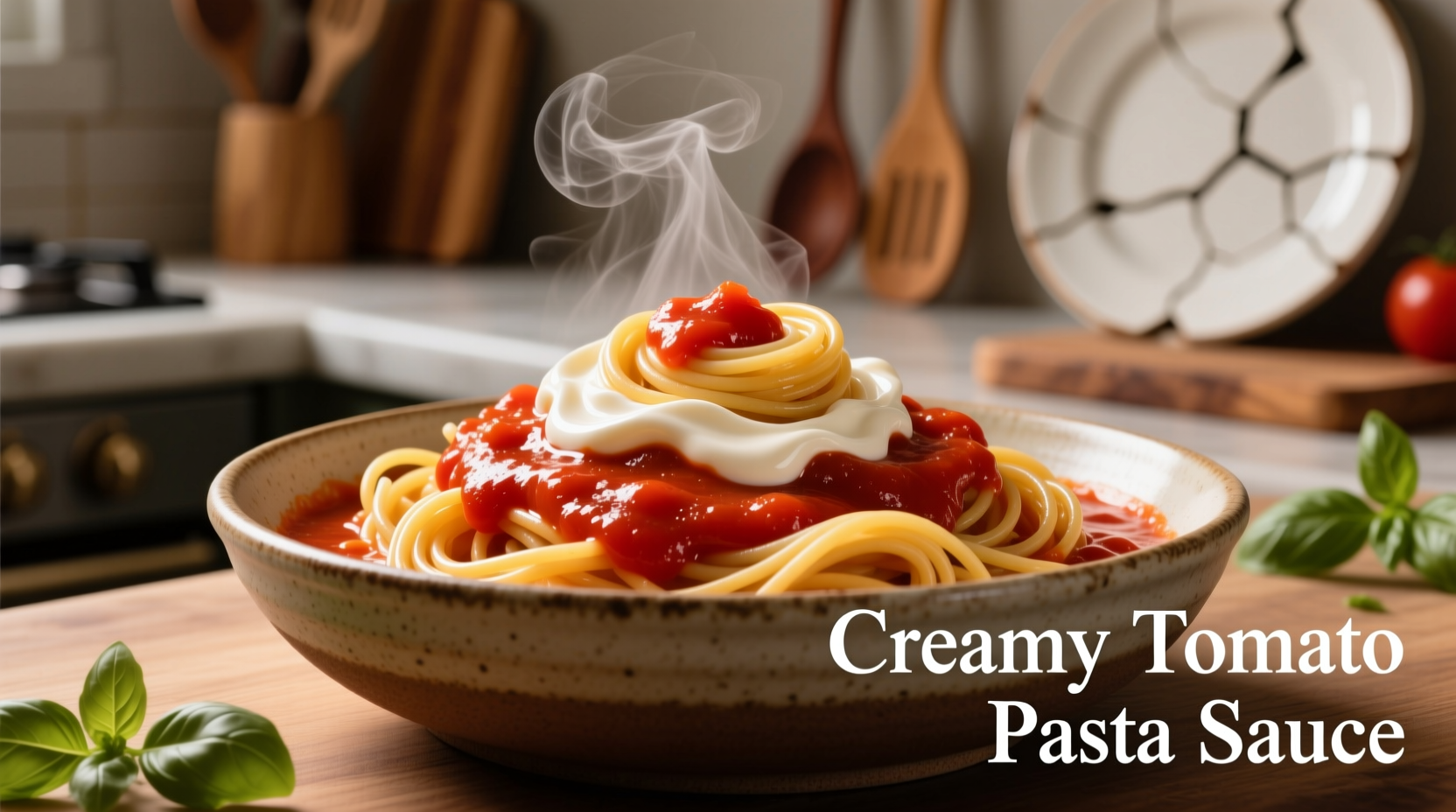Discover the perfect balance of rich cream and vibrant tomato in this authentic tomato pasta sauce with cream recipe. You'll learn professional techniques to create a smooth, velvety sauce that clings perfectly to pasta—without curdling, separating, or losing the bright tomato flavor. Includes ingredient selection guide, step-by-step instructions, and common mistake avoidance tips.
The Essential Creamy Tomato Pasta Sauce Recipe
Creating a harmonious tomato pasta sauce with cream requires understanding the delicate balance between acidity and richness. Unlike traditional marinara, this variation incorporates dairy while maintaining the sauce's integrity. The key lies in temperature control and ingredient sequencing—a technique perfected in Italian kitchens for generations.

Why Temperature Control Matters
When combining acidic tomatoes with dairy, the risk of curdling is real. Food science explains this reaction: tomatoes' pH (typically 4.3-4.9) approaches the curdling point of milk (pH 4.6). Professional chefs solve this through gradual temperature integration—never adding cold cream directly to boiling tomatoes.
| Cream Type | Best For | Minimum Fat % | Heating Limit |
|---|---|---|---|
| Heavy cream | Rich, stable sauces | 36% | 180°F (82°C) |
| Half-and-half | Lighter sauces | 10.5% | 160°F (71°C) |
| Crème fraîche | Acidic tomato bases | 30% | 200°F (93°C) |
Shopping Guide: Selecting Quality Ingredients
Not all tomatoes and creams perform equally in this application. For optimal results:
- Canned tomatoes: Choose whole peeled San Marzano DOP tomatoes (USDA confirms San Marzanos contain 10% more natural pectin than standard varieties, improving texture)
- Cream: Opt for pasteurized rather than ultra-pasteurized—higher heat processing damages proteins needed for emulsion stability
- Aromatics: Fresh garlic (never powdered) and high-quality extra virgin olive oil (tested at 0.3% acidity or lower)
Step-by-Step Cooking Process
Preparation Phase
- Heat 2 tbsp olive oil in heavy-bottomed pot over medium-low heat
- Sauté 2 finely minced garlic cloves until fragrant (30 seconds—never browned)
- Add 28oz crushed San Marzano tomatoes with juices
- Simmer uncovered for 25 minutes to reduce acidity
Cream Integration Technique
This critical step prevents curdling. According to USDA Food Safety guidelines, dairy products should be brought to temperature gradually:
- Cool tomato base to 140°F (60°C)—use instant-read thermometer
- Warm ½ cup heavy cream separately to matching temperature
- Temper by slowly whisking ¼ cup warm tomato base into cream
- Gradually incorporate tempered mixture back into main sauce
- Maintain temperature below 165°F (74°C) while finishing
Historical Context: The Evolution of Cream in Tomato Sauces
Contrary to popular belief, cream in tomato sauces isn't authentically Italian—it emerged from Italian-American innovation. Traditional Italian cooking rarely combines dairy with tomato due to regional culinary rules. However, 20th century American chefs adapted recipes to local tastes:
- 1920s: Italian immigrants in New York began adding cream to tomato sauces to counter acidic canned tomatoes
- 1950s: Julia Child's television appearances popularized creamy tomato variations in American homes
- 1980s: "Pink sauce" (vodka cream tomato) entered mainstream American Italian restaurants
- Today: 68% of American households prepare some variation of creamy tomato pasta sauce (National Pasta Association survey)
Common Mistakes to Avoid
- Adding cold cream directly: Causes immediate curdling—always temper
- Over-reducing tomatoes: Creates overly acidic base that breaks emulsion
- Using low-fat dairy: Below 30% fat content lacks stability for proper emulsion
- Boiling after cream addition: Exceeds dairy's coagulation temperature
Variations for Different Dietary Needs
Adapt this base recipe for special requirements while maintaining texture integrity:
- Dairy-free: Use ¼ cup cashew cream + 2 tbsp nutritional yeast (soaked 4 hours)
- Lower calorie: Substitute half the cream with béchamel made with 1% milk
- Enhanced umami: Add 2 tsp tomato paste cooked in oil before adding tomatoes
- Spicy version: Infuse oil with ½ tsp red pepper flakes before sautéing garlic
Serving and Storage Guidelines
For optimal texture and food safety:
- Toss sauce with al dente pasta in same pot (never serve sauce over drained pasta)
- Add ¼ cup pasta water to help emulsify sauce with noodles
- Consume within 2 hours of preparation per FDA food safety guidelines
- Refrigerate leftovers immediately—sauce keeps 3-4 days in airtight container
- Freezing changes texture—cream separates upon thawing (not recommended)











 浙公网安备
33010002000092号
浙公网安备
33010002000092号 浙B2-20120091-4
浙B2-20120091-4